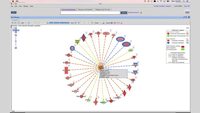QIAGEN IPA
Analysis of exposure to perfluoroalkyl and polyfluoroalkyl substances (PFAS) using QIAGEN CLC Genomics Workbench and Ingenuity Pathway Analysis (IPA)
346 views
Environmental contamination of perfluoroalkyl and polyfluoroalkyl substances (PFAS) is of significant concern due to a wide range of adverse health effects induced by these chemicals, including hepatotoxicity. Analyzing next-generation sequencing data (NGS) from RNA-seq experiments to identify PFAS-induced adverse outcome pathways in the liver may help better understand the mechanisms of PFAS-induced hepatotoxicity. This training will use QIAGEN CLC Genomics Workbench to generate differential expression data from RNA-seq and QIAGEN IPA to study the data within a biological context and uncover molecular mechanisms and regulatory molecules.
In this training, you’ll learn how to:
• Import NGS data into QIAGEN CLC Genomics Workbench
• Generate differential expression data using template workflows
• Export data to IPA
• Investigate pathways and regulatory networks to understand biological mechanisms
• Compare different experimental groups to identify biological similarities and differences
• Generate a custom network
Related videos
QIAGEN IPA
Analyze, compare and contextualize your biological data with QIAGEN IPA
Discover why QIAGEN Ingenuity Pathway Analysis (IPA) is more than just...
QIAGEN IPA
Interpreting your comparison analyses results in IPA
Learn how to view and interpret your comparison analyses results in IPA and...
QIAGEN IPA
New user training: QIAGEN Ingenuity Pathway Analysis (IPA)
New user training: Large dataset analysis and knowledge base queries using...
QIAGEN IPA
Interpreting the Results of Your Phosphoproteomics Analysis in IPA
Learn how to view and interpret your Phosphoproteomics Analysis results in...



